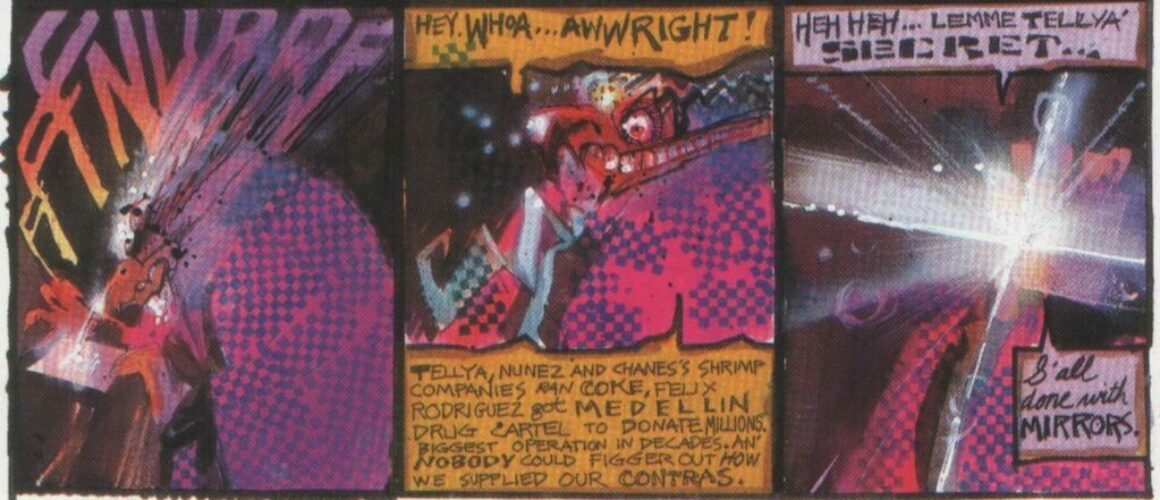Striplights and Software (Book Three, Part 70: Shopping Malls)

Previously in Last War in Albion: Moore found his worldview rapidly evolving in the wake of Watchmen.
“It’s a new world, Arcane. It’s full of shopping malls and striplights and software. The dark corners are being pushed back a little more every day.” – Alan Moore, Saga of the Swamp Thing
These evolutions were already in progress, however, as Moore contemplated what he wanted his next major project to be. Perhaps unsurprisingly, he remained ambitious. Watchmen would have been a perfectly fine career capstone for most people. Indeed, Watchmen was already substantially more ambitious than what most people would attempt, which was at once its virtue and its tragedy. But Moore was surely rankled by the fact that his magnum opus sat in the control of a company he disdained and was steadily sliding towards outright despising. On top of that, he was only thirty-five. There was plenty of time for Moore to write another work of the scale of Watchmen.
In fact, he would decide to write three projects of that sort of scale and ambition, each picking up on different aspects of Watchmen. One of these was From Hell, which saw Moore expand his idea of using a murder and detective story to understand a larger world away from a narrative device for a comic book universe and into an interrogation of the 20th century itself via the Jack the Ripper murders. Another was Lost Girls, which saw Moore give his recurring interest in sexuality as a theme its fullest realization.
It was the third project, however, that was the biggest, most ambitious, and most fascinating thing Moore would work on during the period—a work of audacious formalist complexity that would delve into the storytelling tools he had developed for Watchmen and build an entire philosophical worldview out of them. Moore’s first description of it came in an interview published in February 1988, where he proclaimed that “ I want to do a graphic novel about shopping malls.” Clarifying this willfully puzzling remark, he explained that the comic would be “about a number of things. What happens is that an American shopping mall of Californian scale, one of those monstrous, minature cities you seem to have over there in LA, is erected in this small town in the middle of England.”
This captures one of the essential things about the shopping mall, which is that it was a distinctly American phenomenon even as it was exported to the world, emerging out of the specific concerns of post-World War II America. It is helpful, since Moore sets up the contrast himself, to contrast this with the UK. Both countries experienced a post-War economic boom. In the UK, this involved the creation of the welfare state, and, on a housing level, things like the new towns scheme and the “renovation” of the terraces into tower blocks. These were mixed blessings at best, as Moore trenchantly observed at numerous points during his career, and indeed their failings would be an implicit part of his malls project.…








